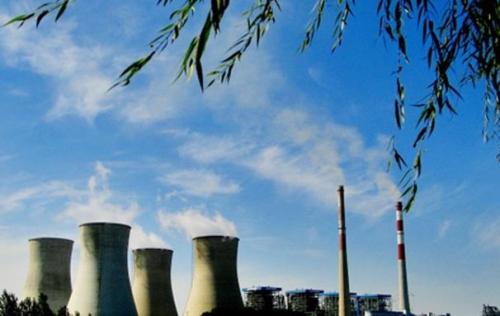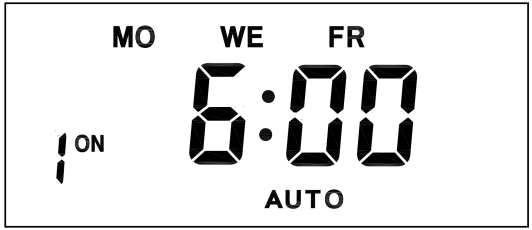
On March 18, Huaneng Group held the 2014 Environmental Protection Working Conference and deployed the key environmental protection work in 2014. Among them, "advance planning and deployment of environmental protection design standards, and constantly optimize the transformation of design programs, to meet the new emissions standards with the best technical and economic indicators." In addition, just after the end of the national two sessions this year, the next day, March 13 On the day, China Power Investment Group held a video and telephone conference on safety and environmental protection in 2014, and made several key deployments for this year's environmental protection work. It calls for "strengthening environmental protection work and resolutely accomplish the task of reducing emissions."
Time is tight and the task is heavy
From July 1 this year, the “Emission Standard of Air Pollutants for Thermal Power Plants (2011)†will be formally implemented. Because the new standard limit is extremely stringent, this standard has also been dubbed "the strictest in history" by the industry. In addition, for key areas, in order to prevent and control regional air pollution, improve environmental quality, further reduce the emission intensity of air pollution sources, and more stringently control the emission behavior, the new standard also specifically establishes “Special Emission Limits for Air Pollutantsâ€. Has reached the international advanced or leading degree.
The data shows that the capacity of active coal-fired units covered by special limits in the new standard will reach 190 million kilowatts. In addition, according to the requirements of the State Council's government work report in 2014, this year China will phase out 50,000 small coal-fired boilers, promote 15 million kilowatts of desulphurization for coal-fired power plants, convert 130 million kilowatts of denitrification, and transform 180 million kilowatts of dust removal. Based on this estimation, the denitrification and dust removal unit capacity will exceed 10 million kilowatts per month.
According to Zhu Yongzheng, former general manager of Guodian Corporation, Zhejiang Province has proposed that “coal-fired power plants must meet the emission levels of gas-fired power plants.†Zhejiang requires coal-fired power plants to achieve 5 mg/m3 of dust and 35 mg/m3 of sulphur dioxide. Nitrogen oxides reach 50 mg/m3. Recently, Zhejiang will put into operation three thermal power plants, which must reach this level. In fact, the emission standards set by the new standards for special areas are only 20, 50, and 100 mg/m3 respectively.
Should be rewarded and punished
For the above “fired power plants to achieve the emission levels of gas-fired power plantsâ€, Zhu Yong-tzu believes that “if the above standards are met, it is basically the level of gas-fired power plants. Many problems are solved. This is a very attractive slogan. The entire environmental protection field of the power industry has been driven by leaps and bounds.†According to him, technically speaking, it is also feasible to reach the level of gas-fired power plants. “Some power plants of Guodian Group in Jiangsu Province have already reached this level,†he said.
How to mobilize the enthusiasm of enterprises to reduce emissions? Zhu Yongxin believes that on the one hand, it is possible to adopt a push mechanism, such as the recent proposed dust emission for coastal areas to reach 20 mg/m3. “More stringent emission standards will also give rise to the development of a large number of related markets, such as dust removal technologies, catalysts, etc.†On the other hand, “This requires policy support, such as subsidies for some units is not enough.†According to Zhu Yongzheng Currently, the national subsidy standard for desulfurization is 1.5 points per kilowatt-hour, 2 points for individual regions such as Guizhou and Chongqing, and 1 point for denitrification. “Denitrification subsidies are generally not enough. Desulfurization is better for large units, but for small units it is still a little worse.â€
At the same time, the data show that according to the preliminary calculation of new emission limits, 190 million kilowatts of active coal-fired generating units in key areas need to be transformed into dust removal, desulfurization, and denitrification systems, and investment of 54 billion yuan is needed. After these facilities are put into operation, they will also increase operating costs by 13 billion yuan each year. In this regard, Chen Tang, chairman of Datang Group, believes that “the support for the environmental protection of thermal power companies should be strengthenedâ€. He suggested that comprehensive consideration should be given to the capabilities of power generation companies in terms of capital, technology, and talents, scientifically establish emission standards, rationally arrange time limits for governance, increase financial support for the construction of environmental protection facilities, and prevent changes due to lack of capacity and overtime. Safety, quality and effectiveness.
Denitrification transformation is in full swing
With the approaching date of the new standard approaching, what is the progress of the environmental protection transformation of the power plant?
In the course of the reporter’s visit to several power plants, the power plants all expressed that despite the difficulties faced by various funds and sites, they are still full of confidence in completing desulphurization, denitrification and dust removal on time. At present, a number of power plants are also in full swing to carry out relevant transformation.
For example, in an interview with a large-scale power plant put into production in Central China in 2008, the factory's employees stated that the power plant was in a state of high coal prices when it was put into operation, resulting in extremely difficult operations and losses for four or five consecutive years; in addition, “at the time of power plant planning and construction China has not made clear the requirements for denitrification. Although we have left room for transformation, we must reform it just a few years after it has been put into operation. If the country formulates a long-term, phased transformation plan, the situation may be better." “However, in the face of serious air pollution problems, the above severe emission reduction policies are also understandable. Coal-fired power companies are also obliged in this respect. Now the power plant is denitrifying the last unit, and it is estimated that it will take 45 days. This will ensure compliance with the new standards before implementation in July this year."
On March 26, the relevant person in charge of the Qinbei Power Plant under the Guizhou Power Group of Guizhou Power Investment Group stated to the reporter: “Our factory has a total of four sets of 300,000 kilowatts of generating units, of which the conversion of Units 1 and 2 was completed in 2013 and is now on the 3rd. The unit will be rebuilt, and Unit 4 will be reconstructed after the completion of the No. 3 transformation, that is, the plan will be carried out in June this year.The power plant will be carried out strictly in accordance with the relevant national plans, and it is expected that all denitrification renovations of the 4 units will be completed by the end of September. Ensure that new emission standards are met."
Instruction Manual
1. Features
Clock display, 10 sets of adjustable timed power control, randomized power control, manual switch and optional DST setup.
2. First time charging
This Timer contains a rechargeable battery. It is normal that the new/old model runs out of battery if it wasn`t being charged for a long period of time. In this case, the screen will not turn on.
To charge : simply plug the timer to a power outlet. The charging time should take at least 15 minutes.
If the screen doesn`t light up or displays garbled characters, simply reboot the system by pressing the [RESET" button.
3. Set clock

Hold [CLOCK" button and [WEEK" button to adjust week.
Hold [CLOCK" button and [HOUR" button to adjust hour.
Hold [CLOCK" button and [MINUTE" button to adjust minute.
Hold [CLOCK" button and [TIMER" button to select 12 hour/24 hour display.
Hold [CLOCK" button and [ON/AUTO/OFF" button to enable/disable DST (daylight-saving-time).
4. Set timer
Press [TIMER" button, select and set timer. Setting rotation : 1on, 1off, 2on, 2off, ...... , 10on, 10off.
Press [HOUR" button to set hour for timer.
Press [MIN" button to set minute for timer.
Press [WEEK" button to set weekday for timer. Multiple weekdays can be selected. ex: if selected [MO", the timer will only apply on every Monday; if selected [ MO, WE, FR", the timer will apply on every Monday, Wednesday and Friday.

Press [RES/RCL" button to cancel the selected on or off timer. The screen will show "-- -- : -- --" , the timer is canceled.
Press [RES/RCL" button again to reactivate the timer.

When timers are set, press [CLOCK" to quit timer setting and return to clock.
5. Random function

Press [RANDOM" button to activate random function, press again to cancel function.
System only runs random function when [AUTO" is on.
Random function will automatically start the timer from 2 to 32 minutes after the setting.
ex : if timer 1on was set to 19:30 with the random function on, the timer will activate randomly between 19:33 to 20:03.
if timer 1off was set to 23:00 with the random function on, the timer will activate randomly between 23:02 to 23:32.
To avoid overlapping, make sure to leave a minimum of 31 minutes gap between different sets of timer.
6. Manual control
Displayed features:
ON : socket turns on.
OFF : socket turns off.
AUTO : socket turns on/off automatically via timer.
Manual ON setting
Press [ON/AUTO/OFF" button to switch from [AUTO" to [ON".
This mode allows socket of the device to power up. Power indicator will light up.
Manual OFF setting
Press [ON/AUTO/OFF" button to switch from [AUTO" to [OFF".
This mode turns socket of the device off. Power indicators will turn off.
7. Electrical parameters
Operating voltage : 230VAC
Battery : NiMh 1.2V
Power consumption : < 0.9W
Response time : 1 minute
Power output : 230VAC/16A/3680W
Q&A
Q: Why won`t my timer turn on?
A: It`s out of battery, you can charge the timer by plugging onto any power outlet. Charge the device for at least 15 minutes. Then press [RESET " button to reset the device.
Q: Can I set seconds of the timer?
A: No, the smallest time unit is minute.
Q: Does my timer keeps old settings without being plugged onto a power outlet?
A: Yes, the timer has an internal battery, it allows the timer to save settings without a power outlet.
Q: Is the battery rechargeable?
A: Yes, the battery is rechargeable. We recommend to charge it for 4 hours so the battery is fully charged.
Q: Does the timer needs internet connection?
A: The timer does not need internet.
Q: Does the screen have back light function?
A: It doesn`t support back light.
digital timer, digital timer socket, electronic timer socket, timer socket
NINGBO COWELL ELECTRONICS & TECHNOLOGY CO., LTD , https://www.cowellsocket.com